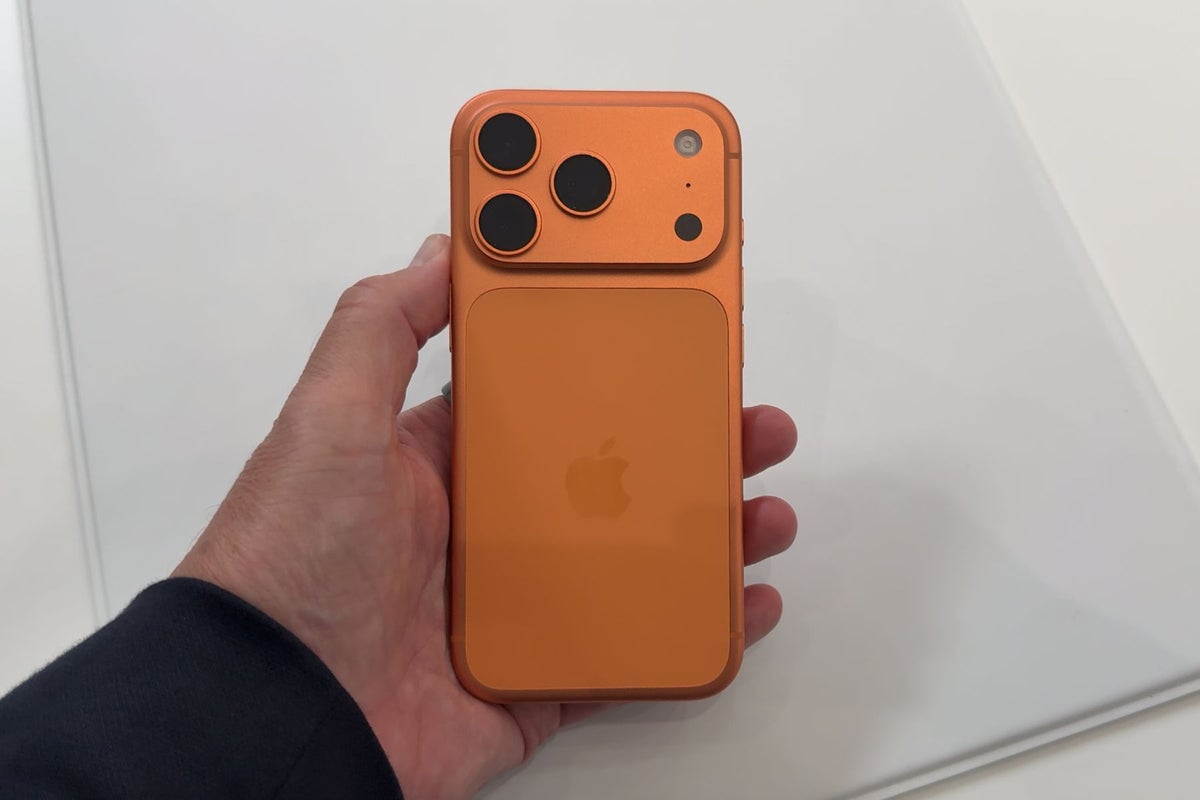
At Apple’s latest event, the company unveiled the new AirPods Pro 3, three new Apple watches – including the Apple Watch Ultra 3 – and four new iPhones. The star of the show was perhaps the iPhone Air, a new, super-slim iPhone.
I was in the 1,000-seater Steve Jobs Theater in California for the launch, where, alongside the Air, Apple announced its most advanced iPhones yet, the iPhone 17 Pro and iPhone 17 Pro Max.
The Pro models offer an all-new industrial design with rejigged camera panels, an aluminium frame and a vapour cooling chamber. They come in three surprising colours, leaving out black, an iPhone staple, for a feisty orange option.
Those are some fascinating updates on last year’s iPhone 16. I need more time with the phones before I deliver a full, detailed review, but I’ve already had time with the new phones to preview some of the new features.
To find out what the new Pro models are all about, I spent some time getting hands-on with the handsets to see how they felt in the hand – and to see if the rumours were true that Donald Trump’s tariffs in the US would push up iPhone prices around the world.
Why you can trust IndyBest
David Phelan is The Independent’s technology critic. David specialises in reviewing the best phones, and he has reviewed every single iPhone model since the original iPhone launched in 2007.
iPhone 17 Pro Max
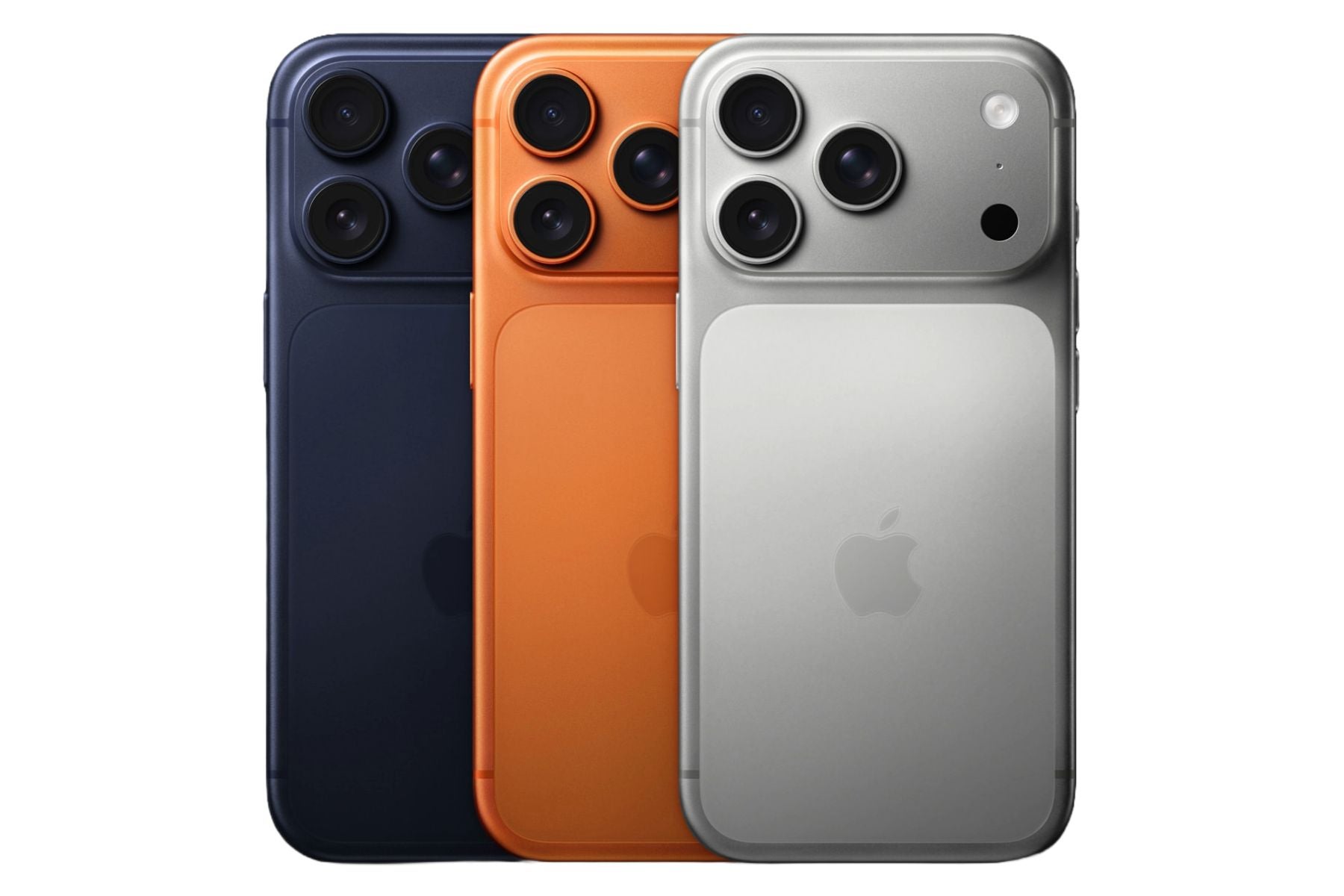
Display: 2868px x 1320px
Brightness: 3000 nits
Refresh rate: 120Hz
Weight: 231g
Dimensions: 16.3cm x 7.8cm x 0.87cm
Processor: A19 pro chip
Storage: 256GB-2TB
Rear camera: 48MP fusion main, 48MP fusion ultra wide, 48MP telephoto
Selfie camera: 18MP
Water resistance: IP68
The Pro models released last September, iPhone 16 Pro and iPhone 16 Pro Max, both had titanium frames as part of their chic, top-shelf design.
So, perhaps it was a surprise that the iPhone 17 Pro and larger iPhone 17 Pro Max were – for the first time for any iPhone with “Pro” in the title – built on an aluminium chassis. That’s the metal Apple has used on its more affordable smartphones only.
But the company says it turned to aluminium because of its lightness. Apple says it has made up for the extra strength that titanium previously offered by redesigning the chassis inside. Instead of a metal frame sandwiched between two layers of glass, the new iPhones had an aluminium unibody that covered much of the back of the phone as well.
That metal frame created a potential problem: wireless charging won’t work if the charging pad is placed against metal instead of glass, so inside the frame is a cut-out sized to let the wireless current through. On top of that sits a glass-like panel, which complements the main colour of the phone. This gives it a strikingly different look from any iPhone of the last few years.
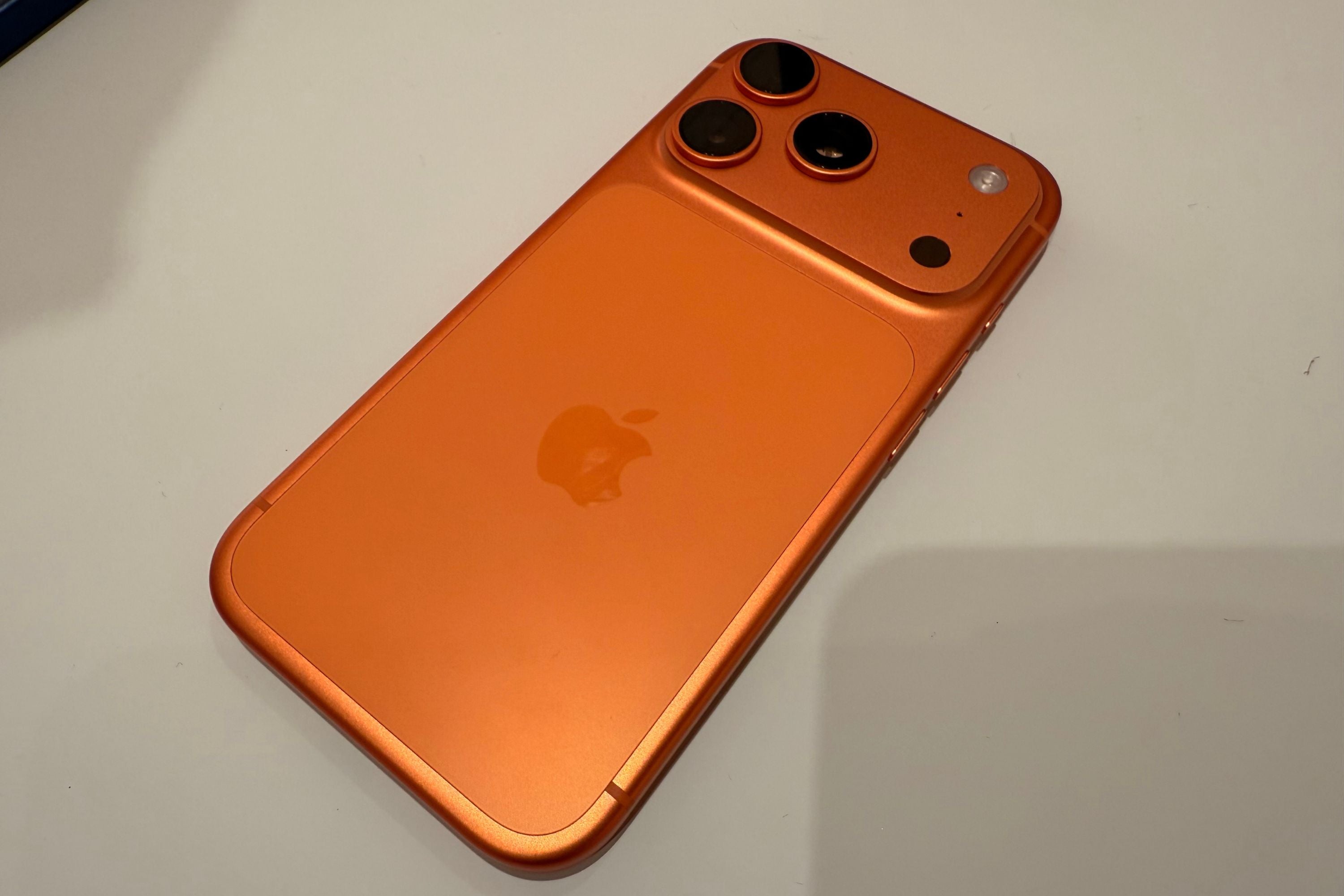
I think the new design is attractive, though not everyone will agree. The Ceramic Shield panel is subtly different from the anodised finish of the aluminium frame, which perhaps gives it a more rugged look than some will want. As a side note, the Apple logo has been moved further south than it’s ever been, centred on the ceramic panel.
The result is that despite the extra hardware, the new phones are only a few grams heavier than their predecessors.
Aside from the weight, the new iPhones felt similar to last year’s models: slim enough to be comfortable, though smaller hands may still find the iPhone 17 Pro Max with its 6.9-inch display (unchanged from last year) stretches their grip too much.
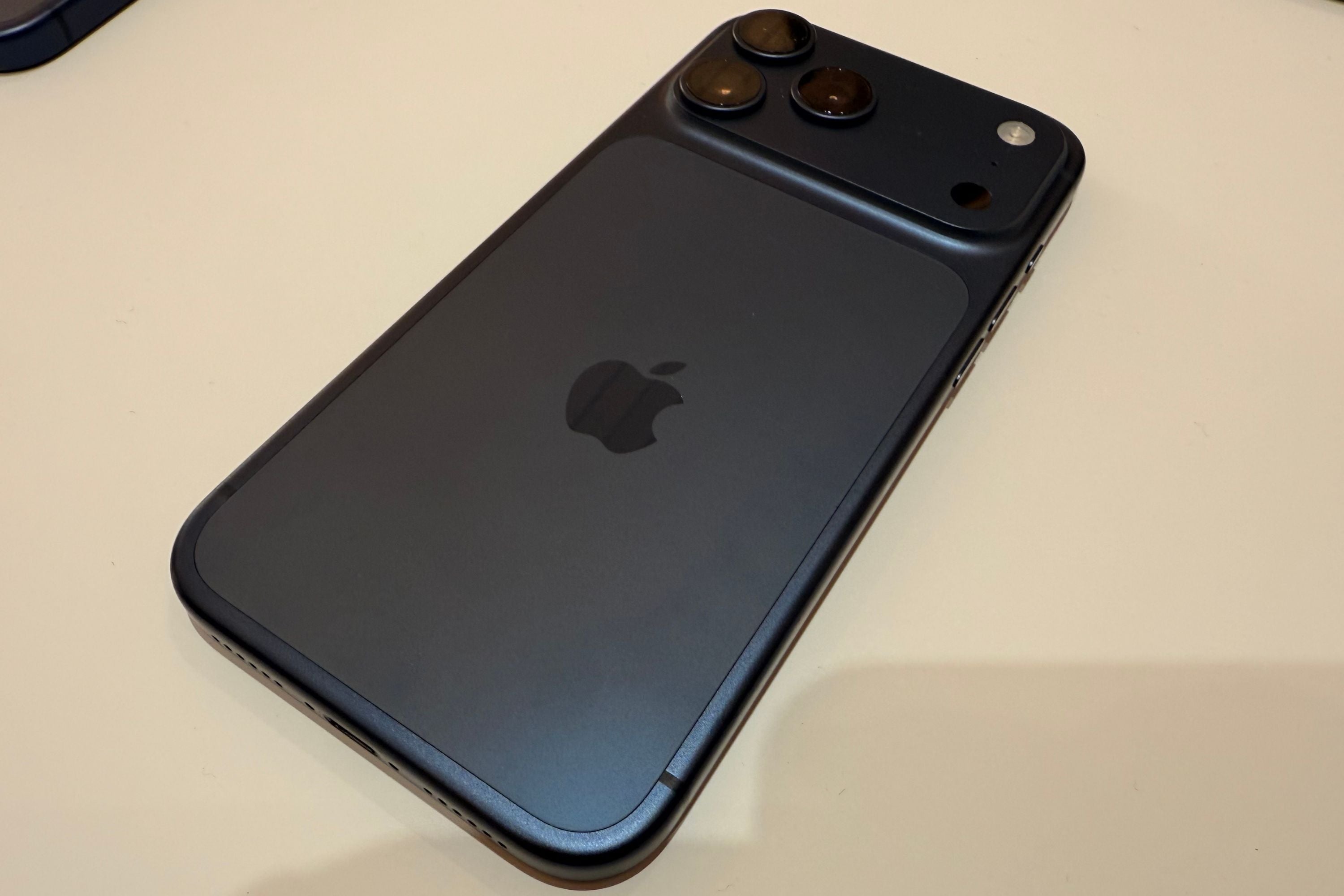
There’s another reason Apple chose aluminium over titanium: the metal has great thermal conductivity. Apple says aluminium means that when the new processor, the A19 Pro, is working hard and for a long time, the phone won’t get too hot. To make sure of this, Apple has put a vapour chamber which dissipates heat quickly – something that will be especially welcome for gamers, for instance, who don’t want their hands to warm up too much when they’re engrossed in a game with intensive graphics. For everyone else, the new processor, which Apple says is the most powerful and efficient an iPhone has ever seen, should keep things running smoothly.
The glass on the phone it’s actually a material called Ceramic Shield, a toughened material Apple has used on several recent iPhone displays. The new covering is the newly announced sequel, Ceramic Shield 2, which is more resistant to scratches and has an anti-reflective property. This looks great – and made it easier to take photographs of the phone in the pristine and brightly lit conditions of Apple’s hands-on area. Overall, the display was as rich and detailed as ever.
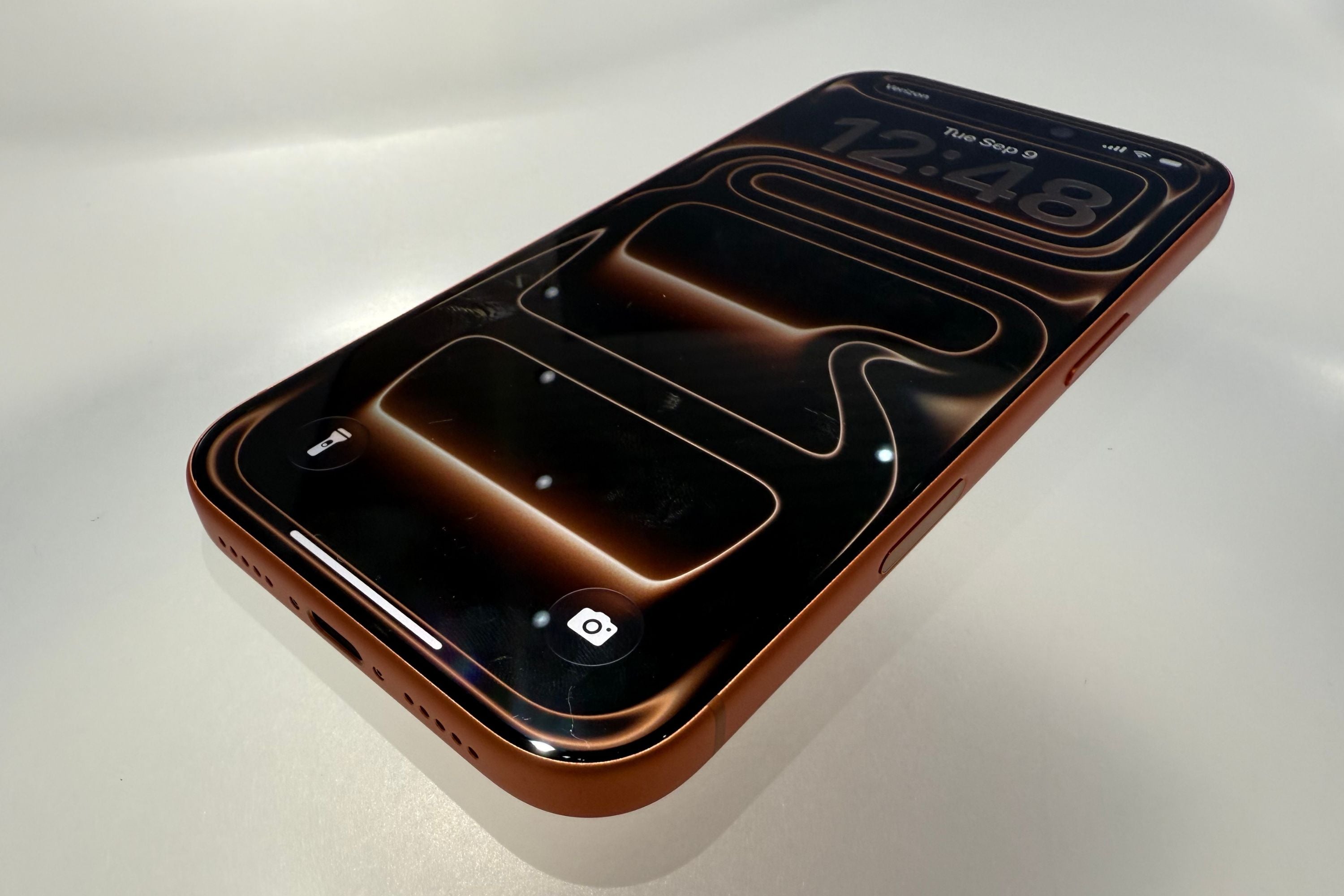
One innovation that’s common to all the new iPhones is an upgraded selfie camera, with 18-megapixel resolution. But that’s not what’s interesting: digital camera sensors are oblong, but this one is square. It means you can take landscape orientation shots while still holding the phone upright. The new sensor, working with the phone’s processor and software, is smart enough to know when there’s a group selfie coming up and zooms out automatically to accommodate everyone.
The new phones also have a new feature called Dual Capture, where front and rear cameras can shoot video simultaneously. You could use that, for instance, at a gig, to film the band onstage and your own reaction at the same time.
On the reverse of the phone, all three of the camera lenses now have 48-megapixel sensors, and the new telephoto camera offers a 4x zoom equivalent compared to the main, up from 3x on the last models. Actually, since Apple lets you shoot just the middle portion of the sensor, that’s equivalent to an 8x zoom at 12-megapixel resolution.
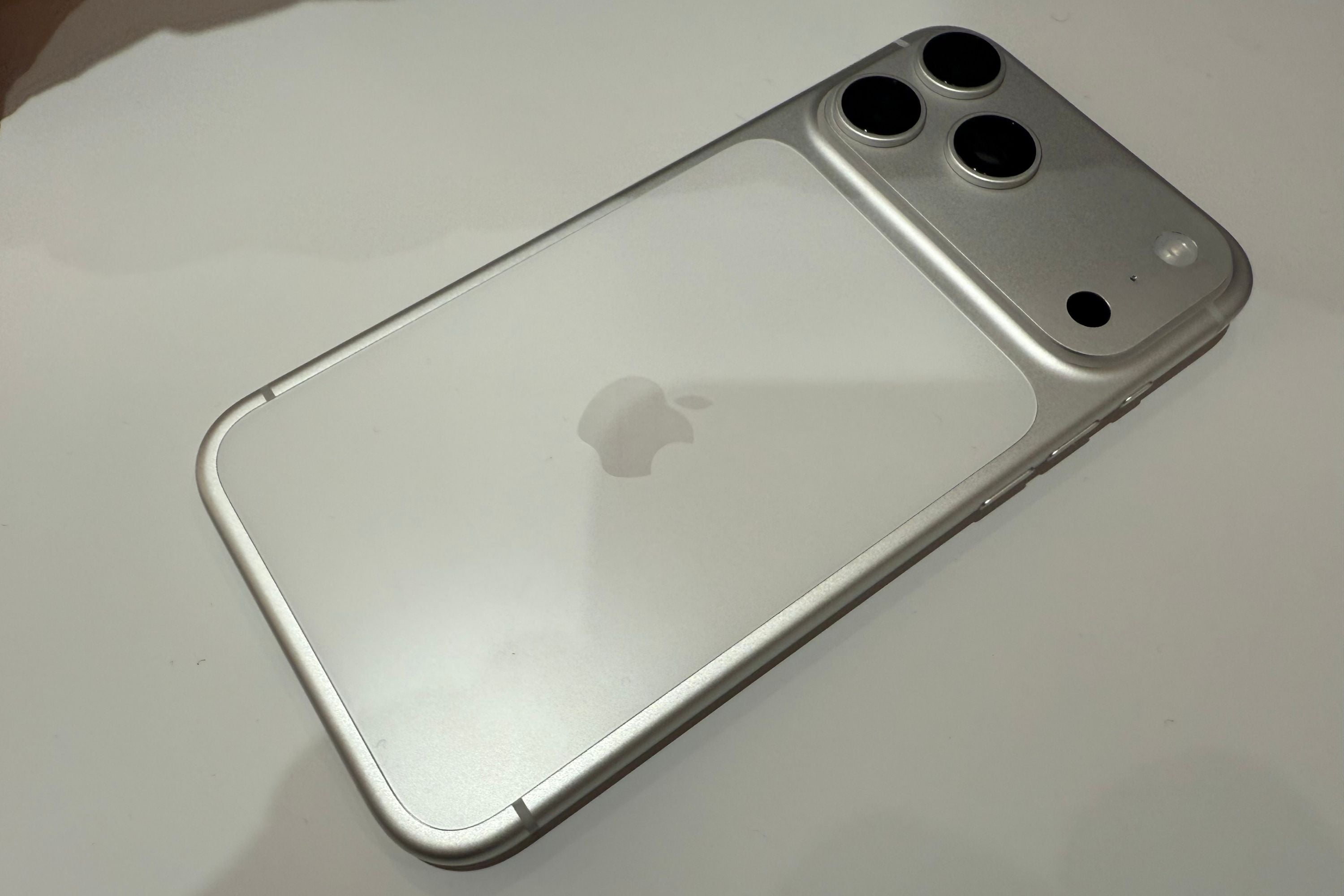
The other big design change is the camera panel, no longer a square with rounded corners in the top left of the phone’s back. Instead, it now stretches the width of the phone, enabling space for three cameras and other components, which makes space elsewhere for the phone’s battery.
That battery life is huge; Apple claims we’ll see the longest ever battery life in an iPhone, 37 hours, which is always a good thing. That said, the iPhone 16 Pro Max battery is pretty epic already. I need to fully test the battery over several days to check, but if it’s true, it’s a big step up.
Buy now £1199.00, Apple.com
The best iPhone 17 Pro Max contract deals
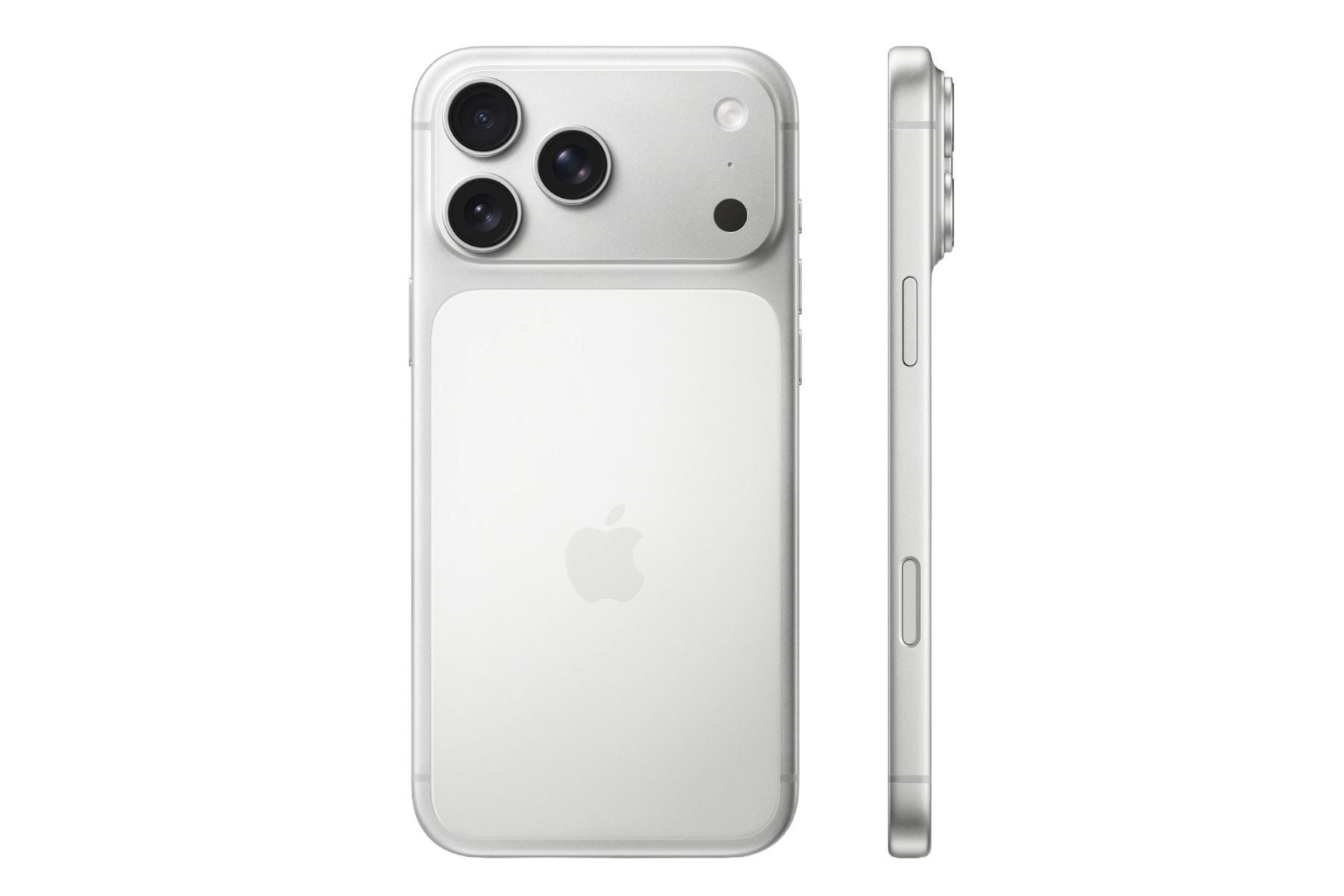
My first impressions of the iPhone 17 Pro Max
When the new iPhones go on sale on Friday, 19 September, the prices have not soared, as had been feared. The smaller iPhone 17 Pro now has a base storage capacity of 256GB, up from 128GB last year. Apple has retained the price of £1,099 for this, but it means the most basic iPhone 17 Pro model this year is £50 more expensive than the most basic iPhone 16 model last year. The larger iPhone 17 Pro Max, also with 256GB storage, remains at £1,199.
I need to test these phones over several days to learn more, but after handling them in person, it seems like there are some significant upgrades to last year’s iPhone 16 Pro.
Want to know more? I also got my hands on the new iPhone Air







